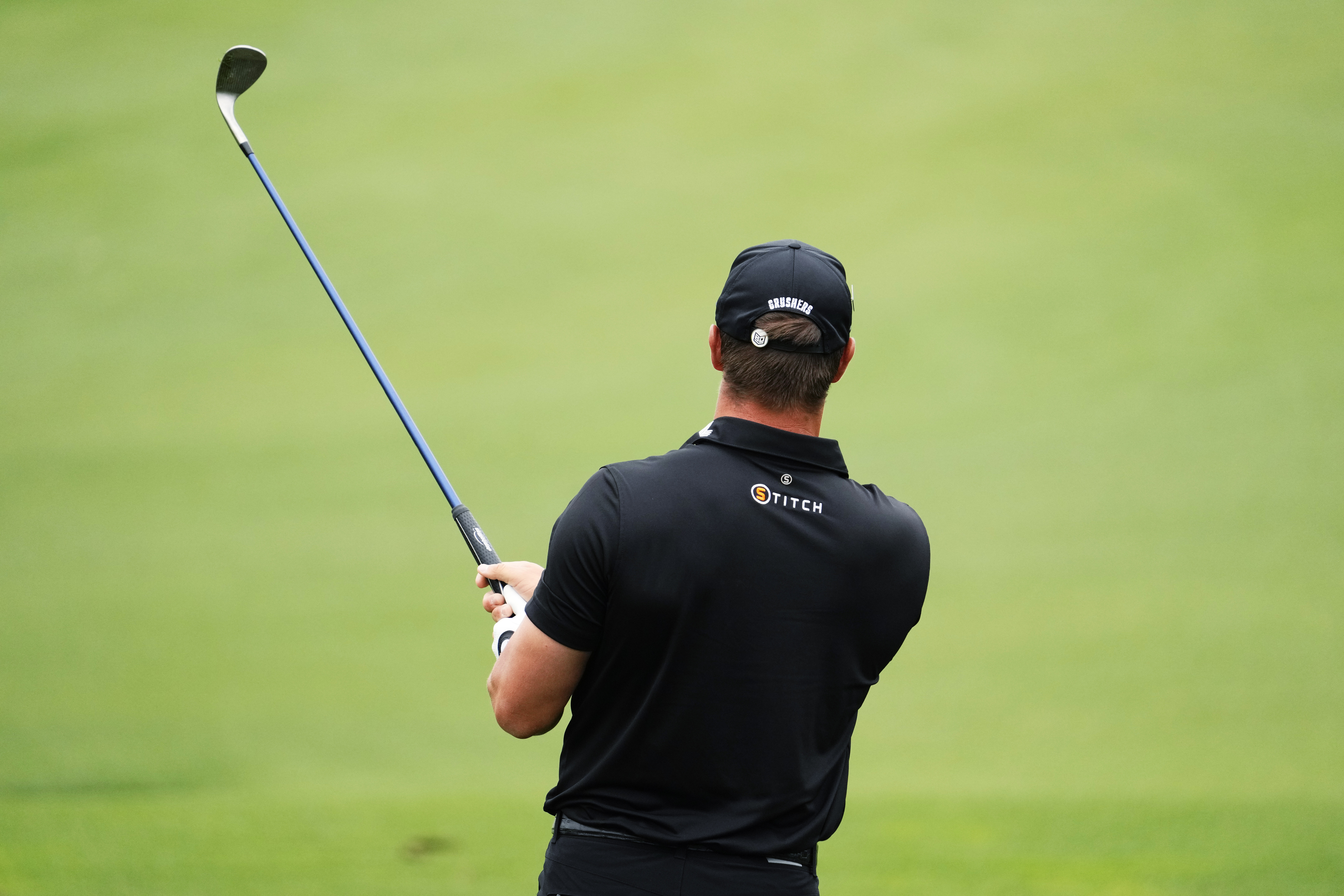AUGUSTA, Ga. – Tom Bailey’s phone blew up on Thursday, and for good reason.
That’s because his little-known company, Avoda Golf, is having a week, to put it mildly. On Monday, a prototype set of his single-length irons made through 3D printing to the exacting specifications of Bryson DeChambeau were deemed conforming by the USGA and three days later the 2020 U.S. Open champion used them to shoot 65 at Augusta National Golf Club and take the lead after the first round of the 88th playing of the Masters.
“Yeah, it’s been an interesting journey,” Bailey said.
Two years ago, the Englishman became intrigued with the concept of single-length clubs and reached out to Mike Schy, DeChambeau’s longtime coach and one of the most ardent supporters of single-length clubs for many years.
“I’ve been using same length clubs from Cobra for a couple of years and there were some things I wanted to explore in more detail. I figured who better to speak to than Mike,” Bailey said via phone on Thursday night. “I came to (the U.S.) for one month to meet Mike and two years later I’m still here.”
“He’s crazy like us,” said Schy of Bailey, who became one of his students at his tent, as he calls his golf academy, in Madera, California, at Dragonfly Golf Club.
Those conversations with Schy opened a whole new can of worms and before long Bailey began custom grinding his own golf clubs designed to his personal specs. He was doing things that mainstream equipment makers ignored.

Bryson DeChambeau checks a club before warming up on the practice range during a practice round for the 2024 Masters Tournament at Augusta National Golf Club. (Photo: Rob Schumacher-USA TODAY Sports)
“It’s such a niche, they just they weren’t going in those places,” Bailey explained. “So I decided that I’ll do it myself and started a company up mid last year and built proto sets myself, caught a lot of traction very quickly with people wanting them as well. So I figured if I can sell a couple hundred sets a year, it would fund my golf. And we did that very, very quickly.”
Then Schy as he put it “threw him into the fire and suggested that he build a set for DeChambeau, “The Mad Scientist,” who is always seeking an edge via his equipment.
“Bryson jumped in and said, ‘Hey, let’s have a go making something’ because no one else at that point was doing it for him. And then last six months, it’s just been a bit of a blur dealing with that.”
That included the launch of a bespoke golf club company, which he named Avoda Golf, a Hebrew word that includes Hebrew lettering on the clubs.
“The actual logo itself is what translates to precision,” Bailey said. “So that’s the logo on the back of the club. And I wanted the brand name to align with that. So Avoda actually means work or worship or in service of God. Kind of aligns with my values. I thought it was a nice name for a brand. We went through hundreds of different names and nothing really clicked and we kind of got to that one. It’s nice.”
DeChambeau was spotted with an earlier iteration of Avoda irons on the range at the LIV Mayakoba event in Mexico in February, but the grooves of the stainless steel clubs produced by 3D printing were too narrow to meet USGA specifications. Why use 3D printing, which has been used for making some putters and other prototypes, but hasn’t been used for mass production of irons yet by OEM’s?
“For what we needed to achieve and the timeline we needed to do it, it was it was the best option to get going with,” Bailey said. “The 3D printing process does bring up a couple of limitations on some accuracy with a few things. I mean, we’re talking to within .001 of the of an inch in accuracy. It’s just like little like almost wiggles to the size of the grooves, the walls inside the groove weren’t perfectly smooth. And that’s the part where we had some issues on because obviously the 3D printing process layers as it builds, instead of just kind of being cut or even molded. So that brings up his limitations on being able to polish inside it. Luckily, we got that sorted. I know his manager (Connor) put in a lot of work over a few days to get that right.”
A unique characteristic of the irons is the bulge or curvature to the irons that DeChambeau requested.
“It’s something that he did bring to us. And we want that to be kind of his thing that he gets to talk about,” Bailey said. “We’re going to let him talk about it when he’s ready to and also not to disrupt him during the weekend.”
Asked at what point did he think DeChambeau was going to put the Avoda prototype clubs he designed into play at the Masters, Bailey said, “Thursday morning.”
He laughed. It was that down to the wire. Only DeChambeau would put a one-off set of irons that weren’t approved by the USGA until Monday into his bag at one of the four majors.
“You know us,” Schy said. “We wouldn’t have it any other way.”
Added Bailey: “Bryson believed that they were at a point where they were ready to go. I believe there’s still more we’re going to be doing with fine tuning. But as far as the real product goes, it’s pretty close.”
Continued success for DeChambeau could keep Bailey’s phone ringing off the hook and lead to orders for his boutique clubs (available models online are priced at $1200) that he can’t possibly fulfill.
“It’s a pretty cool opportunity, that’s for sure,” Bailey said.

